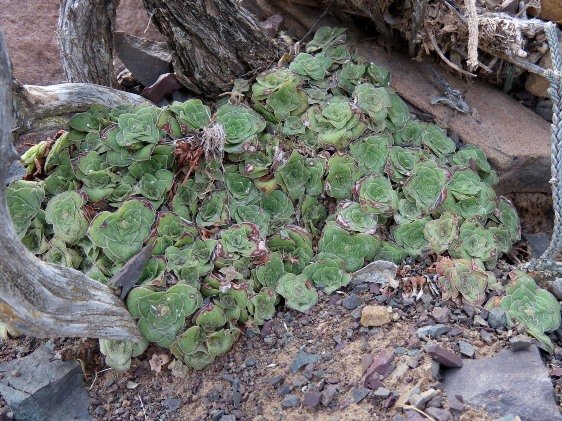Crassula montana subsp. quadrangularis

Author: Ivan Lätti
Photographer: Louis Jordaan
Flat, ground-level leaf rosettes of Crassula montana subsp. quadrangularis multiply in habitat to claim its growing patch that resembles a soft, pale green mat.
The alternate leaves succeed each other at right angles "up" the stem, forming two opposite pairs of vertical leaf arrays perpendicular to each other. The blades in each array lie on top of each other without spacing, diminishing in size to the top. The leaf arrangement appears decussate, but to be that the leaves would have to form equal pairs. The subspecific name, quadrangularis, refers to the quadrangular leaf rosette shape that results.
The fleshy, ovate to triangular leaves are bluntly pointed with short and thickish, pale marginal hairs like eyelashes. There is usually a single row of reddish dots just inside the sometimes-red leaf margins, often with a few more dots scattered upon the blades.
The inflorescence is a small, dense, shallowly dome-shaped cluster of tiny, five-pointed, white flowers that grow on an erect peduncle to about 10 cm in height. Each corolla is tubular with petal tips slightly out-curving, the petal bases fused. Flowering happens in spring.
The subspecies distribution is in the Western Cape from Laingsburg eastwards to the west of the Eastern Cape as far as Uitenhage. The photo was taken south of Beaufort West.
The habitat is rocky slopes and cliffs, often shaded and south-facing. The subspecies is not considered to be threatened in its habitat early in the twenty first century (Smith, et al, 2017; iNaturalist; https://redlist.sanbi.org; https://worldofsucculents.com).

